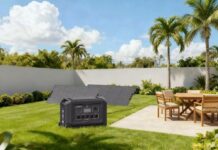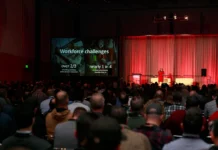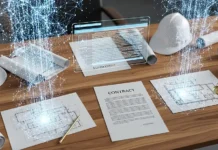Are you the proud owner of a new 3 point wood chipper? Congratulations! You’ve acquired a piece of the industry’s best-valued forestry equipment.
It’s going to save you considerable time and effort managing your forested acreage. But before you get started with your new chipper, it’s important that you understand how to do so safely.
Like all machinery, there’s a chance of injury when you’re working with wood chippers. But you mitigate this risk by doing your homework before you start chipping. Keeping a few vital points top-of-mind can help you stay safe. It’ll also help you work efficiently using your new 3 point wood chipper.
Ready to get started? Here are five crucial safety considerations for operating your new PTO chipper.
1. Read and Keep the Operator’s Manual
When it comes to operator’s manuals, many people fall into one of two categories:
- You have drawers you can’t completely close because they’re stuffed with literature. You keep manuals from everything you’ve ever purchased.
- You’ve never read a manual in your life.
For several reasons, you don’t want to find yourself in either category. Do you need an instruction manual for your new toaster? Probably not. But it’s different with machinery. You should read and hold onto your chipper’s accompanying literature.
The best reason, of course, is to understand all the safety information. But you’ll also want a guide when it comes time to replace consumables such as chipping blades or belts.
So, find a place where you can keep your chipper’s manual. Don’t bury it with pamphlets from every kitchen gadget you’ve ever owned.
2. Don’t Operate Your 3 Point Wood Chipper with a Helper
Unlike a motorcycle or snowmobile, your 3 point wood chipper isn’t a place for company. Does this sound somewhat counterintuitive? Isn’t it beneficial to have an extra set of hands when dealing with troublesome brush and branches?
There are problems with two people simultaneously operating a PTO chipper. It’s impossible to coordinate perfectly. When two people are using a chipper at the same time, there’s a chance one of them might engage it when the other person’s body isn’t in a safe place.
Plus, one of them may fall into the machine. There’s certainly no problem if you want someone to help you pile up all the brush and branches you need to chip. But when it comes to actually running the PTO chipper, make sure you’re flying solo.
3. Wear Appropriate Clothing and Protection
Always wear protection for your eyes and ears when using a PTO chipper. Safety glasses and earplugs can prevent painful injuries and hearing damage.
You must also wear gloves and long pants to protect your hands and legs.
Clothing items such as loose-fitting shirts, baggy pants, and jewelry are no good. They could catch on a branch you’re feeding into the chipper, which could lead to you being pulled into the chute. Never wear loose clothing or jewelry while operating a PTO chipper.
4. Stay Clear of Rotating Drivelines
Too many injuries occur as a result of people getting too close to rotating drivelines. Driveline entanglement can cause devas tating injuries or even death, so always keep your tractor’s master shield and driveline shields in place.
Do you need to make any driveline adjustments or connections? Is it time to clean out your PTO chipper? Be sure to shut off the tractor engine and wait for the driveline to completely stop.
Be careful with adapters as well. Avoid any device between the tractor and chipper PTO shaft that could allow a 000 RMP tractor shaft to power a 540 RPM chipper beyond 540 RPM.
Additionally, don’t use any adapter device that would cause any portion of the driveline to be unguarded. The tractor master shield should always overlap the end of the splined shaft.
5. Use Common Sense with Your 3 Point Wood Chipper
Not all safety aspects of the industry’s best-valued wood chippers are technical or require homework. Frequently, staying safe just requires a bit of common sense.
You should never try to work on your PTO chipper while it’s running. After working on your PTO chipper, remove any tools before connecting it to power or turning it on.
You’d never want to use your PTO chipper where you might cause a fire or an explosion. Like all machinery, it can emit sparks. Be conscious of where you operate your chipper.
And, of course, you need to be aware of all utility lines, electrical circuits, and other mechanical hazards.
In general, keep your work area clean, and make sure no children or pets run up to you while you’re running your 3 point wood chipper.































